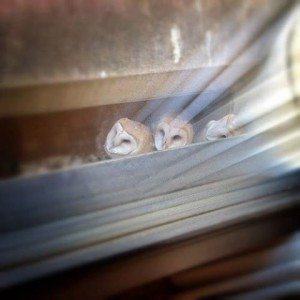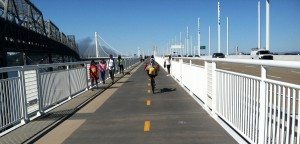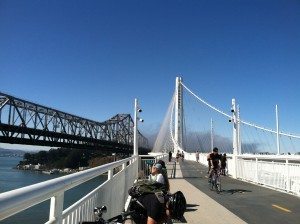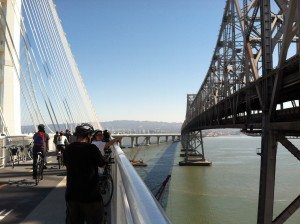Sausal Creek: Birding Hotspot
By Patricia Bacchetti and Mark Rauzon
Fifteen years ago, Sausal Creek wouldn’t have been even an afterthought on most Bay Area where-to-bird maps. Running from Joaquin Miller Park in the East Bay hills down to the Oakland estuary, the creek was long confined to concrete channels, with its tree canopies cloaked in ivy.
But in 1996 volunteers from the newly-formed Friends of Sausal Creek (FOSC) together with the City of Oakland began to liberate the creek along its run through Dimond Canyon. Since then, thousands of cubic yards of invasive plants have been removed and local-to-the-watershed natives have been added to the creek’s banks and its tributaries in the hills. As the riparian vegetation began to mature, animal life emerged, and the creek now hosts an increasing list of breeding and migrant birds, currently at 120 species.
If you follow Sausal Creek as it meanders from the hills down to the estuary, you encounter the full range of urban birding in the East Bay.
Headwaters
The creek’s headwaters are in the redwoods along Skyline Boulevard, near Redwood Regional Park. A trip to Fern Ravine (near the Sequoia Horse Arena) offers the opportunity to find nuthatches, Brown Creeper, singing Pacific Wren, and Hairy and Downy Woodpeckers the year-round, and House Wren in spring. There have been sightings of Pileated Woodpecker across Skyline Boulevard near the Chabot Space and Science Center, one of the few places in Alameda County where they can be found.
 Sausal Creek near Mountain Blvd / Photo by Alberto Fox
Sausal Creek near Mountain Blvd / Photo by Alberto Fox
The Fern Ravine wetland is one of the newer areas restored by FOSC, so look for more species to appear as the habitat matures. It is the only spot in the watershed that still hosts California Quail, and a migrating MacGillivray’s Warbler was counted here on the last bird-monitoring survey.
As you work your way down the hill, a short hike up the steep Palos Colorados Trail along Palo Seco Creek in the spring holds the possibilities of Pacific Wren, Hutton’s Vireo, Black-headed Grosbeak, Olive-sided and Pacific-slope Flycatchers, towhees, and migrating warblers. (The trailhead is at the end of Joaquin Miller Court, off Mountain Boulevard.)
Dimond Canyon
The most developed part of the restored creek bank is in Dimond Canyon along Park Boulevard. This stretch of the creek is becoming a reliable area to find breeding riparian species and is a migrant trap in spring and fall. Here the hills meet the flats, and conifers merge with riparian vegetation that surrounds the park.…















